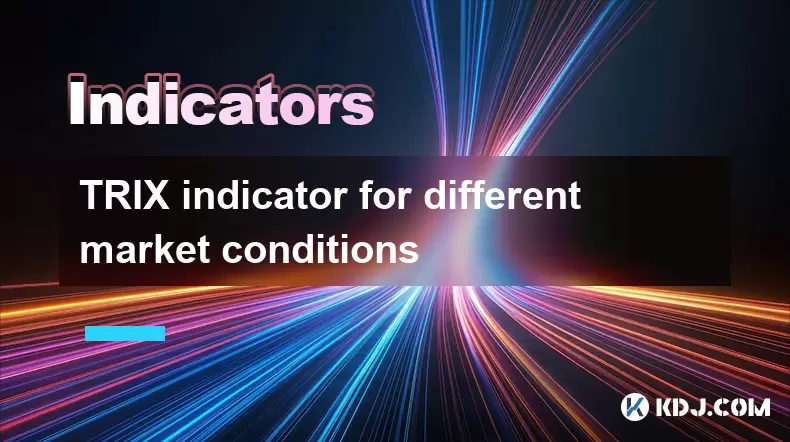-
 Bitcoin
Bitcoin $118,698.3676
0.16% -
 Ethereum
Ethereum $3,428.4877
5.97% -
 XRP
XRP $3.2496
9.52% -
 Tether USDt
Tether USDt $1.0002
0.00% -
 BNB
BNB $725.6930
4.36% -
 Solana
Solana $174.8923
4.52% -
 USDC
USDC $0.9997
-0.02% -
 Dogecoin
Dogecoin $0.2139
6.02% -
 TRON
TRON $0.3155
4.62% -
 Cardano
Cardano $0.8045
7.12% -
 Hyperliquid
Hyperliquid $46.6582
-1.72% -
 Stellar
Stellar $0.4676
0.80% -
 Sui
Sui $4.0143
0.38% -
 Chainlink
Chainlink $17.1546
2.97% -
 Hedera
Hedera $0.2458
3.27% -
 Bitcoin Cash
Bitcoin Cash $496.5967
-0.06% -
 Avalanche
Avalanche $22.8813
3.13% -
 Shiba Inu
Shiba Inu $0.0...01439
3.42% -
 UNUS SED LEO
UNUS SED LEO $8.8389
0.42% -
 Toncoin
Toncoin $3.2113
2.82% -
 Litecoin
Litecoin $101.2646
4.24% -
 Polkadot
Polkadot $4.2262
2.32% -
 Monero
Monero $340.4295
2.92% -
 Pepe
Pepe $0.0...01365
2.92% -
 Uniswap
Uniswap $8.9702
-2.78% -
 Bitget Token
Bitget Token $4.7675
2.00% -
 Dai
Dai $0.9998
-0.02% -
 Ethena USDe
Ethena USDe $1.0003
-0.04% -
 Aave
Aave $324.6394
-2.11% -
 Bittensor
Bittensor $433.6051
-0.88%
TRIX indicator for different market conditions
The TRIX indicator helps cryptocurrency traders identify trend reversals and momentum shifts by smoothing price data and highlighting divergences.
Jul 12, 2025 at 02:50 pm

Understanding the TRIX Indicator in Cryptocurrency Trading
The TRIX indicator, or Triple Exponential Average, is a momentum oscillator widely used by cryptocurrency traders to identify potential trend reversals and filter out market noise. Unlike simple moving averages, TRIX applies triple smoothing to price data, making it more responsive to short-term fluctuations while reducing false signals. The indicator oscillates around a zero line, with positive values suggesting bullish momentum and negative values indicating bearish pressure.
In the context of cryptocurrency trading, where volatility is high and trends can reverse quickly, understanding how TRIX behaves under different market conditions becomes crucial. Traders often use TRIX in conjunction with other tools like RSI or MACD to confirm signals and avoid misleading readings.
Key Insight:
The TRIX indicator helps detect overbought and oversold levels, especially when combined with signal line crossovers and divergence analysis.TRIX Behavior in Trending Markets
During strong uptrends or downtrends in the crypto market, the TRIX indicator tends to stay above or below the zero line respectively for extended periods. In an uptrend, the indicator will typically remain positive, and any dips toward the zero line may offer buying opportunities. Conversely, in a downtrend, TRIX stays negative, and bounces toward zero could indicate temporary rallies rather than trend reversals.
- Look for TRIX to remain above zero during bullish phases
- In bearish markets, TRIX should consistently stay below zero
- Use signal line crossovers within the trend direction to confirm trade entries
It’s important to note that during trending conditions, divergences between price and TRIX are less reliable unless the trend shows signs of exhaustion.
TRIX Performance in Sideways or Range-Bound Markets
In sideways or consolidation phases, the TRIX indicator oscillates closely around the zero line without showing a clear directional bias. These conditions are common in crypto markets during low volume periods or before major news events.
- Monitor TRIX crossing above or below zero as potential entry points
- Divergence between price and TRIX can be a stronger signal in ranging environments
- Avoid relying solely on signal line crossovers due to frequent false signals
Traders can combine TRIX with support and resistance levels to improve accuracy. For example, if TRIX crosses above zero near a key support level, it might indicate a bounce is imminent.
Using TRIX During High Volatility Periods
Cryptocurrencies are known for their extreme volatility, especially during macroeconomic announcements or regulatory updates. In such cases, the TRIX indicator can generate erratic readings due to rapid price swings.
- Adjust the TRIX period setting to smooth out excessive noise (e.g., from default 14 to 20)
- Focus on significant crossovers instead of minor fluctuations
- Combine TRIX with volume indicators to validate momentum shifts
During high volatility, it's essential to apply wider stop-loss orders and consider using longer timeframes for TRIX analysis to avoid premature exits.
Applying TRIX for Divergence Detection in Crypto Assets
One of the most powerful uses of the TRIX indicator is detecting momentum divergence between price action and the oscillator. This occurs when the price makes a new high or low, but TRIX fails to confirm the move.
- Bullish divergence: Price makes lower low, TRIX makes higher low
- Bearish divergence: Price makes higher high, TRIX makes lower high
- Confirm divergence with candlestick patterns or volume surges
For instance, if Bitcoin reaches a new all-time high but TRIX fails to surpass its previous peak, it may suggest weakening buying pressure and a possible reversal.
Frequently Asked Questions (FAQs)
Q: Can the TRIX indicator be used effectively on lower timeframes in crypto trading?
A: Yes, TRIX can be applied on lower timeframes like 15-minute or 1-hour charts, but it may produce more false signals due to increased market noise. Traders should consider adjusting the period length or combining TRIX with filters like Bollinger Bands or volume profiles for better results.
Q: Is TRIX suitable for all types of cryptocurrencies?
A: While TRIX works well for major cryptocurrencies like Bitcoin and Ethereum due to their relatively smoother price action, altcoins with erratic behavior may not yield consistent results. It’s advisable to backtest TRIX strategies on specific assets before live trading.
Q: How does TRIX compare to MACD in cryptocurrency trading?
A: Both TRIX and MACD are momentum indicators, but TRIX applies triple smoothing to price data, making it less sensitive to sudden spikes. MACD, on the other hand, reacts faster to price changes but can be more prone to whipsaws. Depending on your trading style, one may be more effective than the other.
Q: What settings should I use for TRIX in highly volatile crypto markets?
A: The default setting is usually 14 periods, but increasing it to 20 or even 30 can help reduce volatility-induced noise. Additionally, adding a signal line (typically a 9-period EMA of TRIX) can enhance trade confirmation in turbulent conditions.
Disclaimer:info@kdj.com
The information provided is not trading advice. kdj.com does not assume any responsibility for any investments made based on the information provided in this article. Cryptocurrencies are highly volatile and it is highly recommended that you invest with caution after thorough research!
If you believe that the content used on this website infringes your copyright, please contact us immediately (info@kdj.com) and we will delete it promptly.
- Winning Design: Nine-Year-Old's Art Becomes a Chocolate Coin!
- 2025-07-18 01:10:12
- Bitcoin, Market Cap & Strategy: Decoding the Crypto Game in 2025
- 2025-07-18 01:10:12
- Plume and Colb Finance: Tokenizing Pre-IPO Equities for the Blockchain Era
- 2025-07-18 00:35:12
- Bitcoin's Bull Run: Can It Break Through the Bearish Sentiment?
- 2025-07-18 00:35:12
- Silver Breaks 14-Year High: What's Driving the Rally?
- 2025-07-17 22:50:13
- Ozak AI, Stellar (XLM), and Solana (SOL): The New Crypto Watchlist Stars
- 2025-07-17 23:50:12
Related knowledge

Advanced RSI strategies for crypto
Jul 13,2025 at 11:01am
Understanding the Basics of RSI in Cryptocurrency TradingThe Relative Strength Index (RSI) is a momentum oscillator used to measure the speed and chan...

Crypto RSI for day trading
Jul 12,2025 at 11:14am
Understanding RSI in the Context of Cryptocurrency TradingThe Relative Strength Index (RSI) is a momentum oscillator used to measure the speed and cha...

Crypto RSI for scalping
Jul 12,2025 at 11:00pm
Understanding RSI in the Context of Crypto TradingThe Relative Strength Index (RSI) is a momentum oscillator widely used by traders to measure the spe...

What does an RSI of 30 mean in crypto
Jul 15,2025 at 07:07pm
Understanding RSI in Cryptocurrency TradingRelative Strength Index (RSI) is a momentum oscillator widely used in cryptocurrency trading to measure the...

What does an RSI of 70 mean in crypto
Jul 13,2025 at 06:07pm
Understanding the RSI Indicator in Cryptocurrency TradingThe Relative Strength Index (RSI) is a widely used technical analysis tool that helps traders...

Does RSI work in a bear market for crypto
Jul 16,2025 at 01:36pm
Understanding RSI in Cryptocurrency TradingThe Relative Strength Index (RSI) is a momentum oscillator used by traders to measure the speed and change ...

Advanced RSI strategies for crypto
Jul 13,2025 at 11:01am
Understanding the Basics of RSI in Cryptocurrency TradingThe Relative Strength Index (RSI) is a momentum oscillator used to measure the speed and chan...

Crypto RSI for day trading
Jul 12,2025 at 11:14am
Understanding RSI in the Context of Cryptocurrency TradingThe Relative Strength Index (RSI) is a momentum oscillator used to measure the speed and cha...

Crypto RSI for scalping
Jul 12,2025 at 11:00pm
Understanding RSI in the Context of Crypto TradingThe Relative Strength Index (RSI) is a momentum oscillator widely used by traders to measure the spe...

What does an RSI of 30 mean in crypto
Jul 15,2025 at 07:07pm
Understanding RSI in Cryptocurrency TradingRelative Strength Index (RSI) is a momentum oscillator widely used in cryptocurrency trading to measure the...

What does an RSI of 70 mean in crypto
Jul 13,2025 at 06:07pm
Understanding the RSI Indicator in Cryptocurrency TradingThe Relative Strength Index (RSI) is a widely used technical analysis tool that helps traders...

Does RSI work in a bear market for crypto
Jul 16,2025 at 01:36pm
Understanding RSI in Cryptocurrency TradingThe Relative Strength Index (RSI) is a momentum oscillator used by traders to measure the speed and change ...
See all articles

























































































